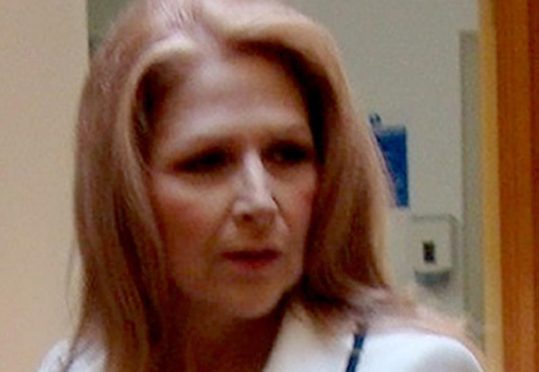Theresa Riggi defied all the usual stereotypes of a cold-blooded killer.
She appeared for sentencing at Glasgow High Court with pristine make-up, flowing blonde hair and an immaculate white suit chosen – she claimed – by her children, who she had murdered less than 12 months before.
Riggi originally from California, moved to the north-east in 2007 with her husband Pasquale Riggi who worked as an oil industry engineer in Aberdeen.
She left their home in Skene, near Westhill, amid a bitter custody dispute and fled to Slateford Road in Edinburgh, where she stabbed to death eight-year-old twins Austin and Luca and five-year-old Cecilia.
She had tried to cover up their deaths with a gas explosion, before she threw herself off their flat’s balcony, but managed to survive the 40ft drop.
After lengthy court processes, Riggi was sentenced to 16 years in prison in 2011.
She died of pneumonia in 2014.
Now, almost a decade after the brutal killings, one of the UK’s top former detectives has revisited the incident, and the key players involved in the investigation, for crime show The Real Prime Suspect for American TV channel CBS.
Jackie Malton met one of the first CID officers on the scene of the murder, Neil Stone, who described the shock at seeing what Riggi had left in her wake.
He said: “I do recall seeing blood and I do remember the three of them lying on the floor.
“I could see injuries to them which weren’t consistent with a gas explosion and the window of that room was open – where she’d obviously jumped out.
“I can see facially and on their hands that made me think they were defensive injuries, and made me think there’d been a knife involved.”
Malton also spoke with Dianne Smith, the family liaison officer for Mr Riggi.
In the aftermath of the murders, she had been sent to his Aberdeenshire home to break the horrific news, and gathered his statement over the course of seven weeks.
She said the incident had “always been with her”.
She added: “This case involved children – and their lives were taken by the person who was meant to nurture and protect them.
“The man was devastated.
“It did appear his wife was obsessive and believed no one could look after them the way she could.”
Riggi’s mental stability had been a topic of the show.
Dr Julian Boon, a forensic scientist, described how one of her personality types – histrionic personality disorder – explained the nature of the murders.
He argued the attack was “frenzied” and “calculated” and had a sense of “ritualism” at play, a result of her disorder.
“This was someone who knew what she was doing,” he said.
The show also visited Senior Investigating Officer, Keith Hardie.
He explained that police were initially trying to trace Mr Riggi in Aberdeenshire.
Mr Hardie said: “He never thought for one second she would harm the children, but she was certainly over-protective.”
The oil worker had apparently seen the news on television, and had his solicitor contact the police as he knew his estranged wife lived on the same street as the explosion.
Mr Hardie got so involved in the case that he attended the children’s’ funeral in Aberdeen’s St Mary’s Cathedral.
He added: “This case had a massive impact on everyone involved in the inquiry, and I don’t think we should ever forget that.”
